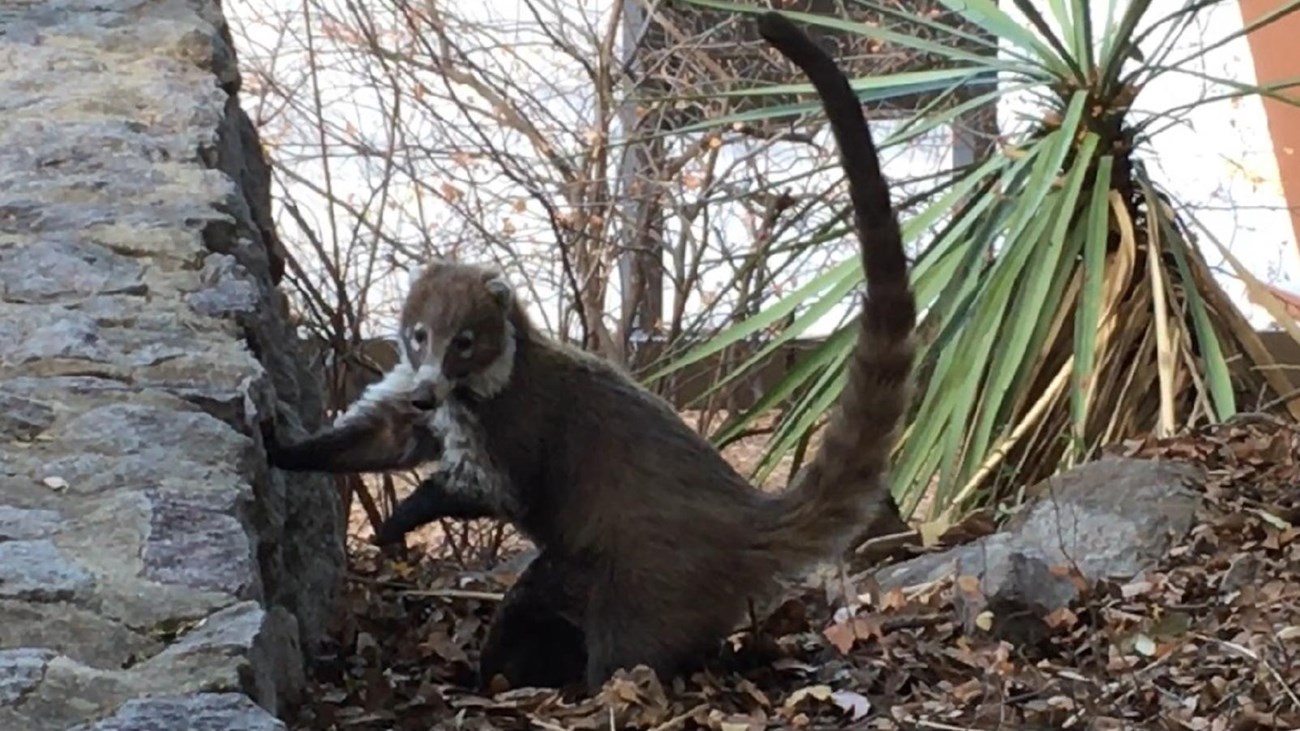
NPS photo Species like the western box turtle and the cactus wren utilize the grasslands and desert scrub, while the northern goshawk lives in the nearby old-growth pine forest. Black bear and whitetail deer wander throughout the Monument utilizing a variety of habitat types. The banded rock rattlesnake prefers a more specialized habitat, such as rocky slopes and gravelly drainages. The unique geological formations of the Monument provide the vertical cliffs that turkey vultures need for nesting, while underground faults allow water to spring up in some areas, creating small wetlands for the tiger salamander. Mexican species at the northernmost edge of their range also occur here. Species like the white-nosed coati, Chiricahua fox squirrel, and the elegant trogon can be found in the sky-islands of southeastern Arizona, but are rarely seen elsewhere in the state or country. Migrating birds pass through the area on their way to and from wintering grounds in Mexico, Central and South America, while many bird species are “residents” at Chiricahua at various times of the year. Almost 200 species of birds have been documented in the Monument. The unique geology, geographic location, and diverse ecology of the park all play a role in its incredible animal diversity. In all, there are 71 species of mammals, 46 species of reptiles, 8 amphibians, 171 species of birds, and uncounted numbers of insects that regularly occur at Chiricahua National Monument. 
Keep Wildlife WILD!
White-nosed coatis are social animals that can be seen throughout the monument during the day. Maintain a safe distance from all wildlife.
Visit our keyboard shortcuts docs for details
Watch this illustrated stop motion video about food conditioning, habituation, and what you can do to help keep the wild in wildlife! |
Last updated: July 27, 2018
